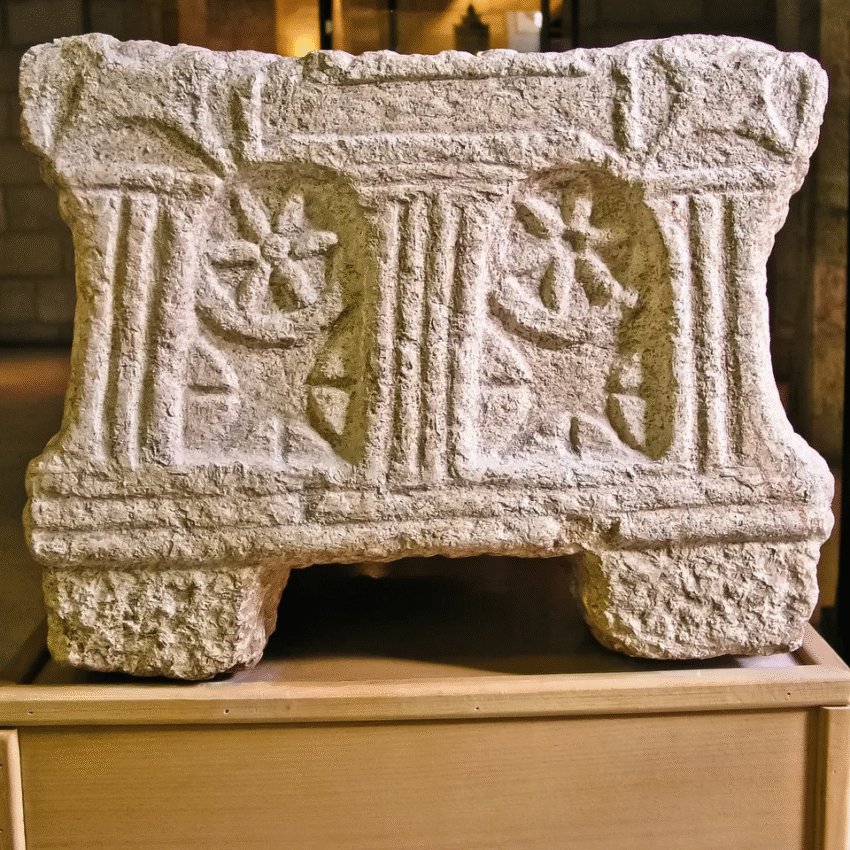The Magdala stone was discovered in 2009 by the Sea of Galilee at Migdal. Theories as to what it depicted, though, were rare. Now, it appears that has changed. The answer? The stone is a kind of early virtual reality headset, or vehicle:
Prof. Mordechai Aviam of Kinneret College was not involved in the Magdala excavation but has vast experience in Galilean archaeology from the Roman and Byzantine period. He studied the stone over long months, and didn’t see rosettes on the side panel. He saw wheels. Wheels of what? The Chariot of God.
Aviam published his alternative interpretation of the Magdala Stone, a “holistic interpretation and glimpse into the life of Galilean Jews at the time of Jesus,” in the journal Novum Testamentum – and lo, the establishment was unhappy.
But many agreed. Among them is the renowned art historian Prof. Rina Talgam of Hebrew University. She had studied the stone and thought all along, before Aviam’s article, that it shows the chariot of God, she tells Haaretz by phone. “What we see are the important parts of the Temple in Jerusalem,” she explains. “It’s a virtual visit to the Temple. It is democratization of the Temple.” source: https://www.haaretz.com/archaeology/2025-03-18/ty-article-magazine/the-magdala-stone-does-it-show-gods-chariot-in-the-temple/00000195-aa0c-d280-a79d-ef8d93f90000
The article mentions that a “Wheeled Chariot” was a common theme in the Bible established by differing authors:
God is represented several times in ancient writings by fire or burning shrubbery. Ezekiel, for instance, lent to the throne-chariot mysticism movement that began over 2,000 years ago: “In the fifth day of the month, which was the fifth year of king Jehoiachin’s captivity, the word of the LORD came expressly unto Ezekiel the priest,” says the first chapter. Ezekiel then discourses at length on divine wheels and then on the appearance of God before him: “As the appearance of fire round about enclosing it, from the appearance of his loins and upward; and from the appearance of his loins and downward I saw as it were the appearance of fire” (Ezekiel 1:27).
Daniel 7:9 is obscure but connects between the supernatural and a flaming throne and wheels. Enoch 1 writes of a lofty throne whose “appearance was as crystal and the wheels thereof as the shining sun. … And from underneath the throne came streams of flaming fire.” Enoch also connects wheels and angels.
Aviam and Talgam both believe that what we see on the rear of the Magdala Stone is an allegorical artistic representation of the Holy of Holies, home of the Holy Spirit, represented by a chariot with flaming wheels. source: ibid
The top of the box has some more offered interpretation:
Aviam also associates celestial symbolism to the large (actual) rosette, which ultimately has 12 petals – six inside, six outside. The outer circle formed by the outside petals may represent the heavens. The 12 petals may represent the 12 months of the Jewish year, which brings us to the number of loaves on the Showbread Table: again 12. Josephus says it: “The loaves on the table, 12 in number.” source: ibid
A fascinating discussion regarding the production of showbread follows and how it was folded and by whom.
Conspicuously absent from the analysis, though, are the 12 tribes in the noticing of all the other elements of 12.
Could the Kingdom be prepared to send out a “vehicle” to pick up members of the tribes of Israel? Maybe. At the very least, the virtual tour is more open now than it has hitherto been.

